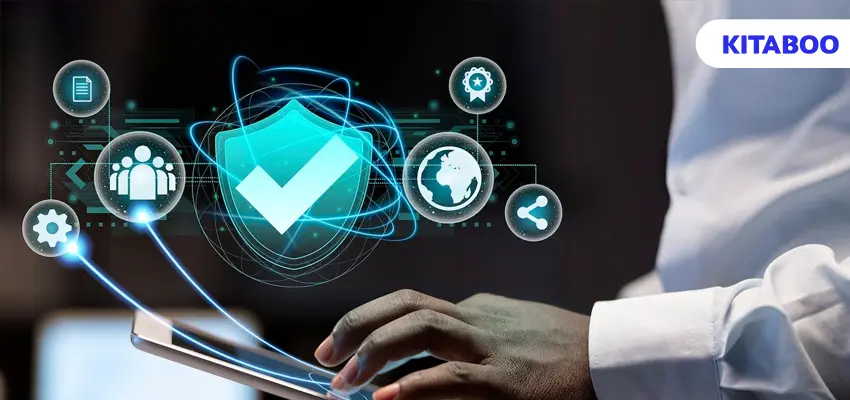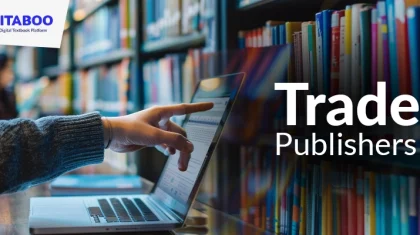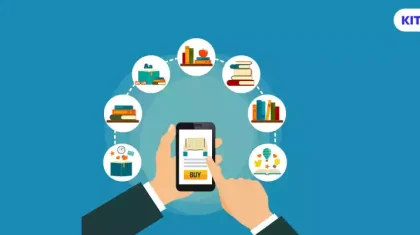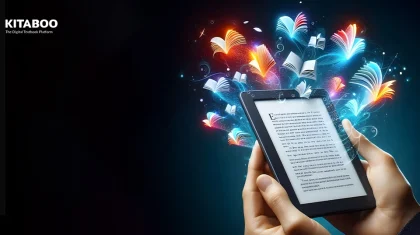
How Does DRM Protection Help in Safeguarding Your Digital Content?
Summarize this blog with your favorite AI:
Digital Rights Management (DRM) is a pivotal force in the rapidly evolving landscape of digital media management. It stands as a renowned technology, serving as a robust guardian for your digital content, preventing unauthorized access, copying, sharing, and distribution.
DRM protection allows you to create a digital barrier between the content and the user. This restricts unauthorized usage of digital assets in multiple ways, such as copying, sharing, preventing editing, and more.
In this post, we will discuss DRM technology in the realm of digital media management. Let’s dive in!
Table of Contents:
I. What is DRM?
II. How Does DRM Protection Work?
III. Benefits of DRM for Safeguarding Digital Content
- Intellectual Property Protection
- Secure Distribution Channels
- Protection against Instances of Piracy
- Increased Revenue Potential
- Empowers Authors to Safeguard Their Creative Ownership
- User Interaction and Analytics
IV. Conclusion
What is DRM?
DRM, or Digital Rights Management is primarily the technology used to control access, usage, and distribution of digital content. It includes a set of thoughtfully designed policies, permissions, and restrictions that confer digital content providers, publishers, and distributors complete control over their content.
DRM protection enables both content creators and distributors to protect their intellectual property and ensure that only authorized users can access and utilize the content.
How Does DRM Protection Work?
When it comes to DRM protection, the mechanism operates through a multifaceted approach designed to safeguard digital content. At its core, Digital Rights Management is a technology that aims to control and manage access to digital assets, preventing unauthorized use, distribution, and infringement.
Digital textbook platforms like KITABOO come with DRM integration to secure educational content. It ensures that educational materials are accessed and utilized in a secure and controlled manner.
Here’s a breakdown of how DRM protection works:
Encryption
One of the core foundations of Digital Rights Management technology is encryption. There are powerful algorithms that are put in place to encrypt digital content that make it accessible to only those with appropriate decryption keys.
By implementing encryption methods, DRM technology successfully prevents unauthorized users from gaining access to digital content.
Permissions and Access Control
With DRM technology in place, publishers and content creators can both define and enforce relevant access control policies for their digital content available online. These policies are designed in a way that determines the users who can access the content, what permissions they have, and how they can use the content.
Among these access control mechanisms are user authentication, password protection, or restricted viewing options.
License and Authorization
The Digital Rights Management technology also utilizes various licensing and authorization mechanisms to manage and regulate access to protected content. This means that users are required to obtain a proper license or permission from the content owner or distributor to be able to access the protected files.
There can be various ways to grant this authorization, such as digital certificates, license keys, or online authentication. Such authorization mechanisms play a crucial role in controlling and overseeing the usage of digital content.
Watermarking
In cases of unauthorized access to content, watermarks can help you identify the source of illegitimate access and prevent any further misuse of the digital content.
This is a unique technique used in Digital Rights Management (DRM) to embed a unique and imperceptible identifier into digital content. This identifier, often a visible or invisible mark, serves several purposes in the protection and tracking of digital assets, such as establishing ownership, deterring piracy, and enabling forensic tracking.
Also Read: DRM Protection: How to create a DRM protected eBook?
Benefits of DRM for Safeguarding Digital Content
Implementation of DRM technology for safeguarding digital content comes with a range of benefits. Some of these are listed below:
Intellectual Property Protection
One of the key reasons to implement DRM is the additional layer of security it offers to prevent unauthorized copying, editing, or sharing of digital content or assets. This is especially important for businesses and individuals looking to ensure control over their intellectual property and creative work.
Secure Distribution Channels
The key benefit of DRM is that it enables the secure distribution of digital content through authorized channels, thus ensuring that only legitimately authorized users can access the content.
Also, the fact that DRM guarantees secure distribution channels stands out as a pivotal advantage. By employing DRM, digital content is channeled through authorized avenues, creating a fortress against unauthorized access. This ensures that only legitimate users with proper authorization can access and enjoy the content.
Protection against Instances of Piracy
DRM also helps to reduce the risk of unauthorized copying of content and distribution of the same to a significant extent. This, in turn, helps to discourage instances of piracy and safeguard the revenue of digital publishers & distributors.
A great example of effective DRM implementation is evident in KITABOO, a leading digital textbook platform. By integrating robust DRM measures, KITABOO not only protects digital assets from unauthorized use but also fosters a secure environment for educational content.
Increased Revenue Potential
DRM helps protect eBooks and other digital content from piracy, thus maximizing revenue potential for both authors and publishers and also allowing them to produce quality content
Empowers Authors to Safeguard Their Creative Ownership
In the vast landscape of the internet, unauthorized copying and misappropriation of digital content have become rampant issues. DRM serves as a formidable solution, allowing creators to thwart unauthorized users attempting to manipulate or claim content as their own.
By implementing DRM, authors and distributors gain a robust mechanism to retain ownership of their work, safeguarding their creative endeavors and protecting against unauthorized use or imitation.
User Interaction and Analytics
DRM systems also give you the advantage of important information about user interaction and content consumption habits. This way, you can gather valuable insights into how users engage with digital content, aiding in informed decision-making and content optimization.
Conclusion
Digital assets comprise a substantial portion of the online content that users consume and interact with on an everyday basis. In such an environment, Digital Rights Management software is critical for protecting digital property, especially for the publishing industry.
In order to effectively navigate this sector, you must collaborate with the proper technology partner to make sure your digital content is safe and secure (in the form of DRM-protected, secure eBooks) and that it reaches the right audience at the right moment.
KITABOO is a leading digital textbook platform that exemplifies the significance of Digital Rights Management (DRM) in safeguarding digital assets, particularly within the publishing industry.
Contact our expert team to learn more!
Also Check:
Discover how a mobile-first training platform can help your organization.
KITABOO is a cloud-based platform to create, deliver & track mobile-first interactive training content.



